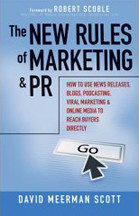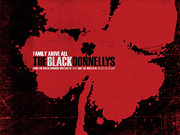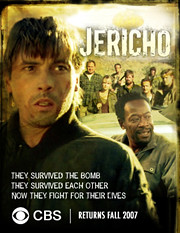Eric Eggertson calls it envy. Mark Rose called it a big payoff. Jordan Behan, who pens Tell Ten Friends (a good blog too) agrees that it is polarizing bloggers, but opted to post his thoughts as a comment.
Never has a digital camera been blamed for so many things or been called so many names. So much so that one might think the "D" in the Nikon D80 stands for Darth Vader. Although the people of Picturetown USA only received free D40s, you would think neighboring towns would form a Rebel Alliance to strike down the Imperial Empire seeded by Nikon.
At least that is what you would think the way some bloggers talk about the 50 long-term loaners (with the option to buy at a discount after one year) that Nikon passed out as part of a blogger outreach campaign. Some think it is important enough of a discussion that CustomScoop's PR Blog Jots even noted Eggertson's and my brief discussion (though reading Eggertson's reply to my inquiry, one might think it was a debate). CustomScoop even asked who might be right, which is humorous to me because I hadn't taken a real position other than to point out there is no ethical breach in blogger outreach unless the loaner is conditional on positive reviews (it is not).
Really, for me, the whole discussion is much ado about nothing. Or, if it is something, then that something is the propensity for bloggers to sometimes make something out of nothing. Eggertson, whose blog I actually like, drives this point home by suggesting the Nikon campaign was designed to create envy in other people ...
"There are giveaways every day on radio stations, in newspapers and elsewhere. And the suppliers of the prizes get more than a product mention in return. Their product is positioned as something that, under other circumstances, you might have received. They are objects of envy."
No, the best blog posts don't always come from comments. Giveaways are not designed to make people envious and jealous (though that might be an unintended side effect). They are and always have been something much simpler: the human equivalent of a Skinner Box.
A Skinner Box, which is a laboratory apparatus used in the experimental analysis of studying behavior, is designed to reward the behavior of an animal (most likely a mouse or a rat) until instrumental conditioning occurs and the animal repeats the actions even without the reward. In humans, it works even better because we don't need to receive a reward; we can simply imagine one, which is why so many people play McDonald's Monopoly.
The Nikon blogger outreach program doesn't really make the cut in being a true giveaway because there is nothing you can do to get the reward. Well, maybe, as Eggerston went on to mention, "I’ve had my eye on the Nikon digital SLRs for years, since I have a few thousand dollars worth of Nikon lenses.'
Ho hum. Cameras don't create envy (or jealously for that matter), people do. Both are emotions: jealousy being the fear of losing something to another person (which clearly does not apply here) and envy is the pain or frustration caused by another person having something that one does not have oneself. Over a camera?
You know, having worked on a few campaigns that have put envy into play, the goal was never to create envy in other people as much as it was to make consumers who could afford the product think that their purchase would create envy in other people. That makes a lot more sense because there would be no point in Nikon trying to create "blogger envy" in an outreach campaign.
No Iago, envy only resides in people who succumb to it. But then again, I'm more inclined to celebrate other people's wins than fret over them or attempt to make them feel less credible just because they happened to have better Flickr photo files or whatever arbitrary measure was applied in deciding which blogger was invited to participate. That's right. Good for them.
As I said before, other than MWW CEO Michael Kempner saying that some bloggers were complaining about the campaign because they did not get a camera (a tactic that surely would produce the opposite of what a blogger outreach program is intended to do, er, I hope), the controversy over the Nikon camera campaign is much ado about nothing. Case closed.

Never has a digital camera been blamed for so many things or been called so many names. So much so that one might think the "D" in the Nikon D80 stands for Darth Vader. Although the people of Picturetown USA only received free D40s, you would think neighboring towns would form a Rebel Alliance to strike down the Imperial Empire seeded by Nikon.
At least that is what you would think the way some bloggers talk about the 50 long-term loaners (with the option to buy at a discount after one year) that Nikon passed out as part of a blogger outreach campaign. Some think it is important enough of a discussion that CustomScoop's PR Blog Jots even noted Eggertson's and my brief discussion (though reading Eggertson's reply to my inquiry, one might think it was a debate). CustomScoop even asked who might be right, which is humorous to me because I hadn't taken a real position other than to point out there is no ethical breach in blogger outreach unless the loaner is conditional on positive reviews (it is not).
Really, for me, the whole discussion is much ado about nothing. Or, if it is something, then that something is the propensity for bloggers to sometimes make something out of nothing. Eggertson, whose blog I actually like, drives this point home by suggesting the Nikon campaign was designed to create envy in other people ...
"There are giveaways every day on radio stations, in newspapers and elsewhere. And the suppliers of the prizes get more than a product mention in return. Their product is positioned as something that, under other circumstances, you might have received. They are objects of envy."
No, the best blog posts don't always come from comments. Giveaways are not designed to make people envious and jealous (though that might be an unintended side effect). They are and always have been something much simpler: the human equivalent of a Skinner Box.
A Skinner Box, which is a laboratory apparatus used in the experimental analysis of studying behavior, is designed to reward the behavior of an animal (most likely a mouse or a rat) until instrumental conditioning occurs and the animal repeats the actions even without the reward. In humans, it works even better because we don't need to receive a reward; we can simply imagine one, which is why so many people play McDonald's Monopoly.
The Nikon blogger outreach program doesn't really make the cut in being a true giveaway because there is nothing you can do to get the reward. Well, maybe, as Eggerston went on to mention, "I’ve had my eye on the Nikon digital SLRs for years, since I have a few thousand dollars worth of Nikon lenses.'
Ho hum. Cameras don't create envy (or jealously for that matter), people do. Both are emotions: jealousy being the fear of losing something to another person (which clearly does not apply here) and envy is the pain or frustration caused by another person having something that one does not have oneself. Over a camera?
You know, having worked on a few campaigns that have put envy into play, the goal was never to create envy in other people as much as it was to make consumers who could afford the product think that their purchase would create envy in other people. That makes a lot more sense because there would be no point in Nikon trying to create "blogger envy" in an outreach campaign.
No Iago, envy only resides in people who succumb to it. But then again, I'm more inclined to celebrate other people's wins than fret over them or attempt to make them feel less credible just because they happened to have better Flickr photo files or whatever arbitrary measure was applied in deciding which blogger was invited to participate. That's right. Good for them.
As I said before, other than MWW CEO Michael Kempner saying that some bloggers were complaining about the campaign because they did not get a camera (a tactic that surely would produce the opposite of what a blogger outreach program is intended to do, er, I hope), the controversy over the Nikon camera campaign is much ado about nothing. Case closed.






















